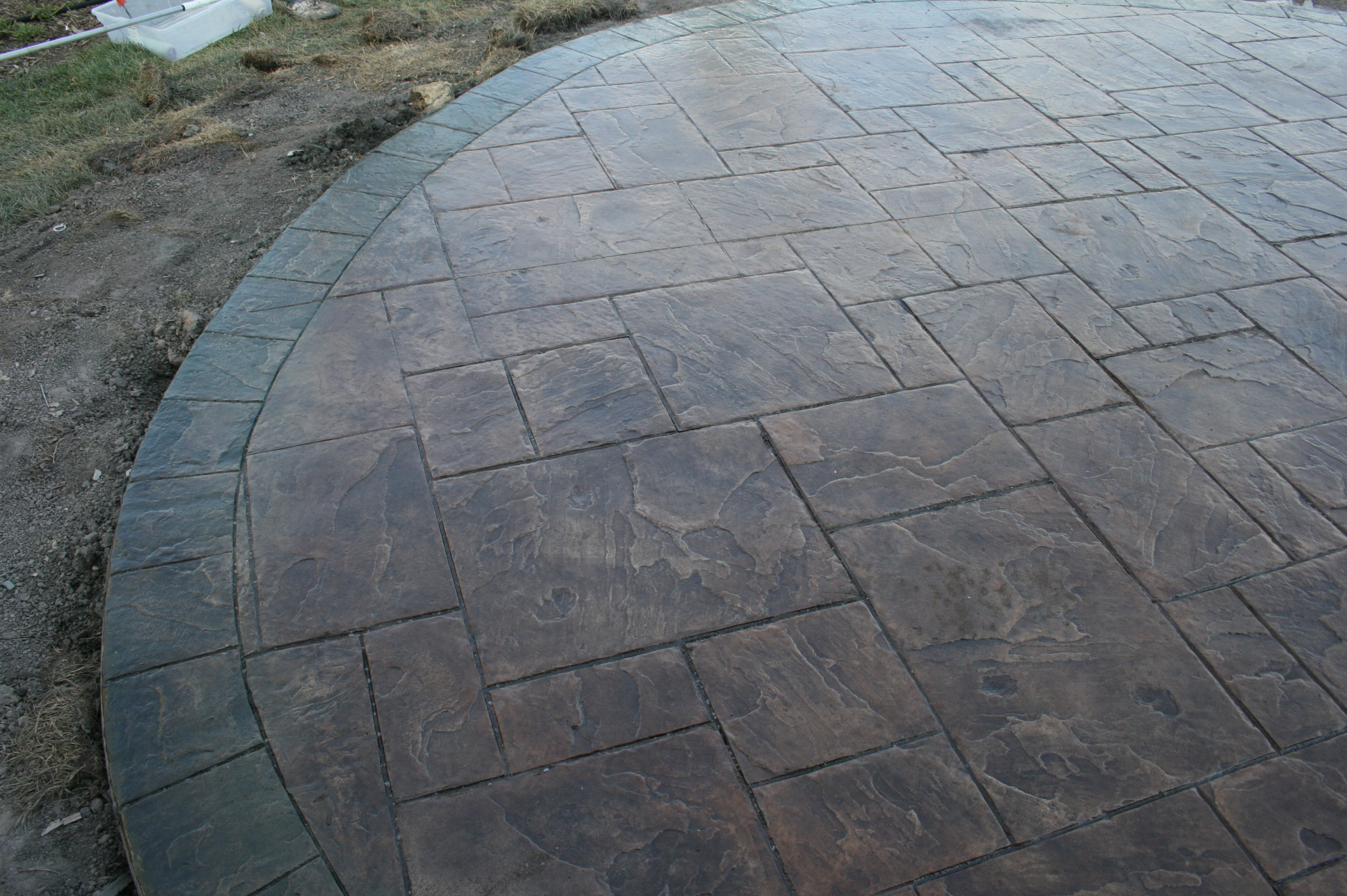Sorry, nothing in cart.

How to use a Tools Border Roller
- /
- /
Perfect decorative tool to set your work apart from the competition. Borders can add color, texture and dimension to many types of concrete surfaces. Some common uses are to jazz up an otherwise un-inspiring plain gray slab, provide a more decoratve aspect to control joints or pour breaks or put the final touch on a stamped masterpiece. Stamped borders really set your work off and tools stamped border rollers make a tough job far easier. Here is an overview of using a border roller.
Form pour and place concrete as normal. Bull float and edge normally. If control joints
are being placed with groover, do so as normal.
Timing is everything Rollers are used earlier than stamping. You should be able to
press your thumb into the surface far easier than the standard for stamping(anywhere
from 15 min to 45 min). The ideal time is when the surface cream allows the roller to
partially settle into the surface allowing a clean impression. If when you begin to roll
and the roller “slides/skids” instead of rolling, it is too soon. If the grout lines
“support” the roller on the surface,it is too hard and you will need to lean much more
on the roller making steady a impression more difficult.
If using a release agent(powder or liquid) of a different color than the rest of the job care should be taken to carefully place release in the border path. One simple method is to cut a heavy napped paint roller cover(or sponge for liquid) to the same width as your stamping roller, coat with release and roll the release along the intended border path. If using the same color release as the remaining job you can apply your release with less discretion. Tru Impressions border rollers have either one or two grout edges depending on the design. Either works for borders. If using a single edge roller, the plain edge is to be placed on the outside along the form where it should have been previously edged thus giving you the second grout line.
With one hand on the bull float handle and the other on the outer edge of the bracket, carefully begin to roll the impression. A slow steady walking pace keeping a slight but steady pressure on the roller, keeping it aligned along the outer form will produce the best results. When encountering a curve, move the outer hand to the roller itself to aid in manually “rolling/turning” the roller. This method will allow the tool to shape the stones or bricks into the corresponding shapes as though they were cut for the curve. If doing a double row, the same process is followed with the exception of having no form support as a guide. Added rows are recommended only by using a second roller as timing can become critical as the surface hardens. After rolling the border, if the remaining surface is to be stamped certain precautions should be taken to avoid damaging the completed border. Most typically, when working around the border, you will protect your border with a similar texture seamless skin. Carefully place the skin on the border surface under the potential striking area of the floppy. If needed you can gently rest the floppy over the skin, preventing any grout lines or other surface marring as you complete the impression with that mat. Care must be taken not to tamp the stamp on the actual border. Continue this method as you complete the edges of the main stamped surface.
When doing longer runs with the border roller that are not along the edge as would be the
case of masking a control joint, you will need to use an appropriate length handle. With
a steady hand carefully roll the roller along the groove with the non-grout edge on the
groove if that is the roller design. When possible using a long straight-edge as an edge
guide is recommended for steadiness. If a metal straight edge is not available making
an “L” brace with 2x4s will work and resist curving. Long internal runs like this need to
be done before any outer borders due to the inability to provide as much downward
pressure on the border roller.

Optional matching floppy mats are also very useful when working into sharp corners
and up against a vertical obstruction. Touch ups and small corrections are usually com-
pleted with a grout tool and/or touch-up mat.
As with any new decorative concrete tool, it is highly recommended to use on a test slab for practice with various techniques before an actual project. Questions on technical information and roller uses, call 888 263 5895.

Leave a Reply